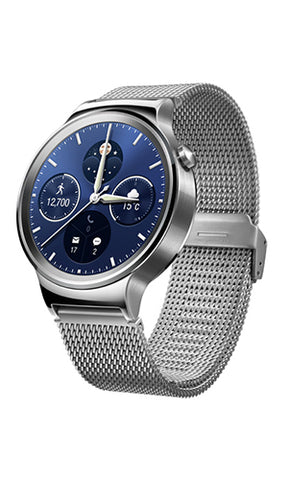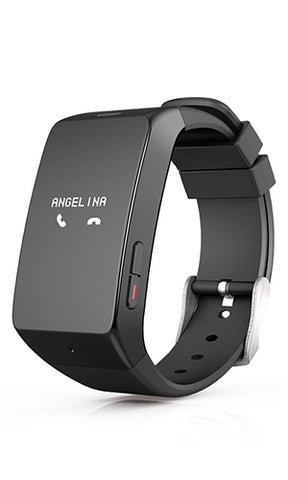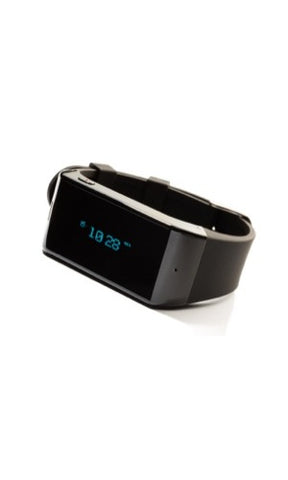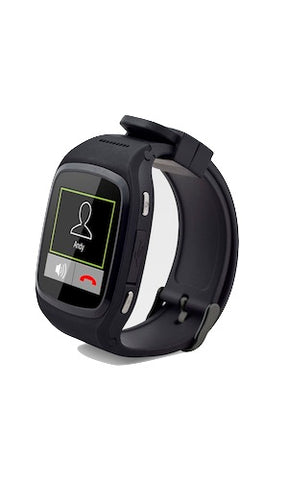The best augmented reality and virtual reality headsets for everyone, from developers to latecomers
Written By
Mark Killian
Whether you’re an avid gamer who pre-orders the latest releases months before they hit shelves, or a Baby Boomer who’s still spellbound by the original View-Master, there’s an augmented reality or virtual reality headset just waiting to embrace your face.
The following is a condensed guide to all virtual reality devices currently on or entering the market, grouped according to the technological adoption curve. We’ve found the right devices for everyone, from the eager “early adopters” to the reticent “laggards.”
And let us assure you, since you’re reading this article on the internet, you have what it takes to enjoy at least one of these VR headsets.
The best virtual reality headsets for innovators
Oculus Rift DK2
The Oculus Rift Development Kit 2 is a high-powered headset equipped with out-of-the-box engine integrations for the Unreal Development Kit, Unreal Engine 4, and Unity 4. In addition to the OLED display, the Oculus DK2 utilizes real-time microsecond precision measurement of motion-to-photon latency to eliminate simulator sickness and accurately track real-world head movements. The Oculus SDK supports Windows, Mac OS X and Linux, and can be pre-ordered for $350. 
HTC Vive Developer Edition
The HTC Vive Developer Edition combines the HTC Vive headset and Valve’s Steam VR base stations to create a fully-immersive VR experience where users can walk around their room as if they were in whatever game they’re playing. And since it’s a developer edition, gamers will get all kinds of SDKs to test and build their own applications. Although there’s no word on price just yet, you can bet it will be at least as much as the DK2.
Fove VR
Fove’s biggest differentiator is their eye-tracking sensors, which allow users to interact with their virtual environment through their eyeballs, rather than a handheld controller like most of their competitors. Fove’s SDK also integrates content from Unity, Unreal Engine, and Cryengine, allowing users to port their existing VR content into their ecosystem and make incredible games. Once Fove’s Kickstarter is complete, the headset is projected to retail for somewhere between $400 and $500.
Razer OSVR
The Razer OSVR headset is strikingly similar to the DK2 in appearance, but what really sets it apart is the Open-Source Virtual Reality (OSVR) ecosystem, “a new standard in VR gaming to push the VR gaming experience forward,” according to their website. Although the hardware behind the Hacker Dev Kit headset is expected to ship sometime in 2016 for $199, the SDKs are now available for developers to start tinkering with on current devices.
The best virtual reality headsets for early adopters
Oculus Rift
The Oculus Rift is like the Arcade Fire of VR headsets — it gained mainstream notoriety while maintaining the loyalty of its earliest followers. It’s one of the best gaming headsets out there, so to make the Oculus Rift even more accessible to the masses, Oculus is including an official Xbox One wireless gamepad with every headset. Also for the consumer version, Oculus invented a pair of tracked nunchuck-style controllers called the Oculus Touch. If you’re more of a gamer than a developer, and have somewhere between $200 and $400, this is your best bet.
Avegant Glyph
The Avegant Glyph has the look and price tag of a pair of Beats ($499), but what sets it apart is the micro-mirror array in the head plate that reflects images directly into your eyes. Although the Avegant Glyph smaller and sleeker than its competitors, it’s also limited to a 45-degree field of vision. On the plus side, you get a pair of quality noise-canceling headphones, a gaming microphone, and a VR display for under five-hundred bucks.
The best virtual reality headsets for the early majority
Sony Project Morpheus
Sony’s headset will appeal to early adopters solely based on name recognition. Whether you’re a Playstation loyalist or you’ve purchased one of their TV sets in the past, you’ll at least be intrigued by Sony’s virtual reality offering. And after you hear about Project Morpheus’ 5.7-inch (1920×1080) RGB OLED display, 120hz refresh rate, 100-degree field of view, nine LEDs for positional tracking, and ergonomic design, you just might start putting aside a little cash for it. Microsoft Hololens
Microsoft Hololens
While others zig to virtual reality, Microsoft is zagging to augmented reality with their revolutionary Hololens. Think Google Glass, if Glass were smarter, more interactive, had a 120-degree field of vision, incorporated awesome holographic computing, and didn’t need to be tethered to a more powerful device. It still looks a little too weird and potentially unsafe for public, day-to-day use, but there are plenty of niches this headset could scratch. Very little specs are currently available, and pricing will be key to landing the early majority.
The best virtual reality headsets for the late majority
Google Cardboard
Between its low price point (starting at $23.99) and its dual-platform support (as of this year’s I/O), Google Cardboard is poised to become the VR gateway drug for developers and users alike. Real-world applications of Google Cardboard already range from grade-school field trips to remote tours of college campuses, and once videographers get their hands on a Jump Camera Rig, the visual possibilities will be endless. Just make sure your phone supports it.
Samsung Gear VR
The Samsung Gear VR is an attractive option for any Samsung GALAXY Note 4, S6 or S6 edge owners who would rather consume content than develop it. After dropping $199 on the hardware, you can download a variety of games, movies, or other interactive experiences from their Milk VR marketplace. And since the Samsung headset was made in partnership with Oculus, you can bet it will be as polished as anything else on the market.
Zeiss VR One
If you want a slightly cheaper Gear VR experience ($129), but don’t own a Samsung product, the Zeiss VR One is your best bet. The device supports any smartphone with a display size between 4.7 and 5.2 inches, as long as you can download and 3D print your own smartphone tray. The Zeiss headset also has a see-through front shield to enable augmented reality apps and plenty of room for users who wear glasses.
The best virtual reality headsets for laggards
View-Master
For an augmented or virtual reality experience that’s so easy a kid could use it, look no further than the classic toy maker, View-Master. View-Master has traded in the flimsy film wheels for a Google Cardboard supported viewing experience where users can “explore famous places, landmarks, nature, planets and more in 360 degree ‘photospheres,’” according to their website. The device itself is rumored to cost $30, with reels and other content sold separately.
Archos VR Headset
The Archos VR Headset is what your grandmother will end up buying you for your birthday when you ask for Google Cardboard or a new View-Masters. Like the aforementioned headsets, the Archos sits in that wallet-friendly $30 range, but it looks like something you’d discover while binge watching the Home Shopping Network. One plus is it supports Windows phones, but aside from that, you should probably ask granny for the gift receipt.
By this time next year, there will likely be a zillion (approximately) new competitors entering the marketplace, and this article will become irrelevant. However, at the time of publication, this is a good summation of the current state of the augmented reality and virtual reality spaces. No matter where you fall on the adoption curve, you can rest assured your concept of reality will be altered in the not-so-distant future.
Tags: AR, Featured Items, gaming, HomePage Featured, oculus, Virtual Reality, VR




